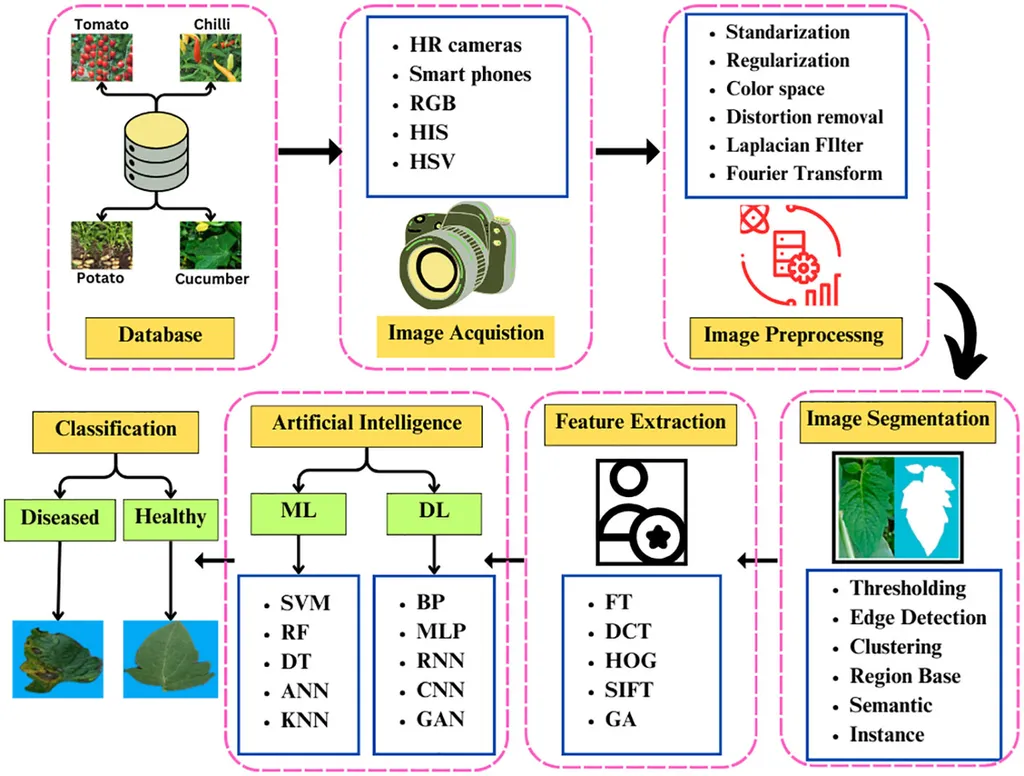In a world where the population is set to hit 8 billion by 2030, the pressure on agricultural systems to deliver safe, healthy, and abundant food is mounting. Horticultural crops, with their diverse production systems, are a cornerstone of global food security. Yet, they face significant threats from insect pests and plant diseases, which not only compromise crop quality and yield but also pose safety risks. The situation is further complicated by the emergence of new pests and pathogens, and the rapid development of resistance to existing pesticides. Enter Peter S. Ojiambo, a leading voice in the field, who has recently published a perspective in *Frontiers in Horticulture* (translated to English as “Frontiers in Horticulture”), shedding light on recent research insights that could revolutionize pest and disease management in horticultural systems.
Ojiambo’s work highlights the urgent need for novel strategies to tackle these challenges, especially in the context of climate change. “Given the recognized need to mitigate climate-change risks, novel pest and disease management strategies are required to achieve net-zero emissions for more sustainable horticultural production,” Ojiambo emphasizes. His perspective offers a glimpse into the future of horticultural crop protection, where technology and innovation play pivotal roles.
One of the most promising areas of research is the integration of artificial intelligence (AI) and the Internet of Things (IoT) into pest and disease management. These technologies enable real-time monitoring and data-driven decision-making, allowing farmers to detect and respond to threats more effectively. “AI and IoT technologies can provide early warnings and precise interventions, reducing the need for broad-spectrum pesticides and minimizing environmental impact,” Ojiambo notes.
Another exciting development is the use of endophytes—microorganisms that live within plant tissues— to enhance plant resistance to pests and diseases. Endophytes can produce bioactive compounds that deter pests and inhibit pathogen growth, offering a sustainable and eco-friendly alternative to chemical pesticides. “Endophytes represent a untapped resource for developing novel biopesticides and biofertilizers,” Ojiambo explains, highlighting their potential to transform horticultural production.
Nanotechnology is also making waves in the field, with researchers exploring the use of nanomaterials to deliver pesticides and fertilizers more efficiently. These nanocarriers can improve the targeting and release of active ingredients, reducing waste and environmental contamination. “Nanotechnology offers precise and controlled delivery of agrochemicals, enhancing their efficacy and reducing their ecological footprint,” Ojiambo adds.
The integration of these technologies into smart agriculture systems is set to redefine pest and disease management in horticultural crops. By leveraging AI, IoT, endophytes, and nanotechnology, farmers can achieve more sustainable and resilient production systems. “The future of horticultural crop protection lies in the integration of these innovative technologies, paving the way for more sustainable and efficient agricultural practices,” Ojiambo concludes.
As the world grapples with the challenges of feeding a growing population amidst climate change, Ojiambo’s insights offer a beacon of hope. His work not only highlights the latest advancements in pest and disease management but also underscores the importance of embracing innovation for a more sustainable future. With the publication of this perspective in *Frontiers in Horticulture*, the stage is set for a new era in horticultural crop protection, where technology and nature converge to create a more resilient and productive agricultural landscape.

